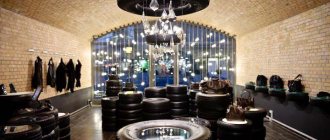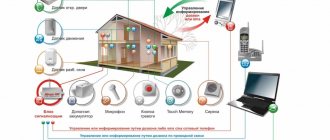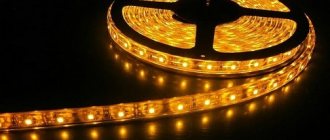If there are no power lines nearby, the cost of connection is too high, or there are other problems, you can make lights in the garage without electricity. There are several options that differ in implementation features and materials; it is worth considering them all and choosing the one that suits best.
And without electricity, you can get bright light in the garage.
Kerosene lamp
This is an invention of the 19th century, which was used everywhere until the general electrification of the country. Now kerosene lamps serve as light sources only in cases when there is an emergency power outage.
A simple model of a kerosene lamp is the well-known portable version with a handle and a glass bulb. It is inexpensive, but instead of buying it, you can rummage through family attics; there is a high probability that you will find such a lamp among the old trash.
Handmade kerosene lamps Such products are real works of art and interior decorations; sometimes workshops create them according to a special, individual order. Between the minimum price and the exorbitant cost, there are a number of well-made models in the mid-price category that can be used in the form of chandeliers, sconces, floor lamps and even lanterns designed to illuminate an area, for example, a summer house.
Kerosene lamps work well not only as decoration and an interesting gadget, but also where a constant light source is needed, but electricity cannot be used. This lamp is suitable, for example, for lighting terraces and gardens. It creates a cozy and pleasant lighting in which you can read, naturally, being next to the lamp.
Often the owners of such a lamp do not want to use traditional kerosene, which has a not very pleasant smell, due to which it is “tightly” absorbed into fabric curtains or paper wallpaper. In this case, you can use special oils that color the flame in different colors. They cost a little more than kerosene, but emit less smoke when burned and have virtually no odor. Fuel with mosquito repellents has been developed especially for gardening and camping.
In any case, regardless of the cost, a kerosene lamp will always help out the owners if the light suddenly turns off due to bad weather, a storm or snowfall. The main thing is to always keep several liters of high-quality, well-refined kerosene, preferably aviation grade, in your garage or shed. It is easy to refill such an antique lamp; just unscrew the cap on the thread, which is located on the side of the metal bottom bulb.
Kerosene is poured inside, after which the tank lid is tightly closed. Caution and accuracy are part of the safety precautions for using this device, since it burns live fire.
Many young people no longer know how to use kerosene lamps. This is an easy art, but you have to be careful when turning on the lamp and setting it up. It is true that lamps are usually made of durable glass and metal, but kerosene from a broken lit lamp will ignite instantly and can cause huge losses. Years ago, it was one of the most common causes of home fires and carbon monoxide poisoning. It is worth remembering that when burning kerosene, a huge amount of carbon monoxide is formed, which should be effectively removed outside the room.
However, using kerosene lamps in accordance with the recommendations does not pose any danger. The user only needs to ensure that the kerosene container is not overfilled and that the wick, which is used to regulate the intensity of the flame, is not lowered too much, as it may fall into the fuel container.
If, after repeated use, the glass of a kerosene lamp becomes smoky and begins to let in little light, it should be cleaned. To do this, you will need to remove the glass flask, which is held in place by two thin wire semicircles. The glass is wiped well with soft paper (napkins, paper towels) on both sides so that no traces of soot remain. The glass flask, which has again become transparent, is returned to its place and secured in this position using a special clamp.
Sometimes it happens that the glass of a kerosene lamp may break or burst under the influence of high temperature. You can look for a replacement at hardware stores.
Light in the country without electricity from potatoes. How to get electricity from potatoes
Free electricity from potatoes at home
Did you know that you can get free electricity from ordinary potatoes? They probably knew, because we all took a general chemistry course at school.
So, in this article we will try to figure out how to get electricity from potatoes at home in order to light an LED flashlight and other low-power electrical devices.
Is there electricity in potatoes?
To check and make sure that there is a small amount of electricity in a regular potato, use a regular multimeter. Take a large potato, wash it to remove dirt, and then insert the probes from the multimeter into the potatoes. After turning on the multimeter, you will see that the device shows several millivolts on the display.
The second experiment will show how to increase the electricity produced by potatoes. To do this, just stick a piece of copper wire into the potato on one side, and a small piece of aluminum on the other side. When the voltage is removed from the end of the wire and a piece of aluminum, its readings will increase to 3 Volts.
So where does the electricity come from in potatoes? In fact, everything is very simple, and potatoes contain a natural electrolyte in the form of dissolved acid and salt. Here it is advisable to note that not only potatoes can generate electricity, but also many citrus fruits, for example, lemon, orange, and some fruits, for example, apple.
If you place some galvanized contact in a lemon, then the electrodes will begin to pass through it, and through the copper contact they will be attracted. As a result, using potatoes, you can get free electricity. Let's look at the homemade craftsmen's website to see exactly how this can be done.
Free electricity from potatoes at home
Don't be confused by thinking that it is potatoes that generate electricity. If this were the case, then we would all suffer greatly when frying potatoes or preparing other delicacies from them. Electricity in potatoes is generated through a chemical process and some other elements, without which nothing would work.
First of all, these are: copper, zinc, acid. It is through the zinc that the electrodes leak. In potatoes there is a favorable environment successfully created by acids.
So, to assemble a potato battery, for educational purposes, of course, you will need the following consumables:
- Potato;
- Single core copper wire. It is better to choose as large a cable cross-section as possible;
- Zinc hardware. You can take, for example, galvanized nails or self-tapping screws. Wire will also work, but it is extremely important that it contains zinc.
We use a galvanized nail for the negative contact (anode), and a copper wire for the positive contact (cathode). Insert a galvanized nail on one side of the potato, and the end of a stripped copper wire on the other side.
Let's take voltage measurements and see a few millivolts on the multimeter display. To increase the voltage values, connect 2-3 potatoes in series - the voltage will increase to 1.5 Volts. This voltage is already enough to power the LED from a small flashlight.
Thus, you can get free electricity from potatoes. The more potatoes, the higher the voltage readings will be. By the way, you can raise them several more times by using not raw, but boiled potatoes, filling them with a housing from an old R20 battery or any other structure.
Homemade oil lamp
In the event of a power outage, and in the complete absence of candles, a kerosene lamp or an LED flashlight, you can quickly make an oil lamp from available materials. For this, an ordinary metal tin can or glass container for pickled vegetables is enough.
Practical tips for making an oil lamp:
1. To create a lamp, you should use only containers made of non-flammable materials that are heat-resistant.
2. Before adding oil, the selected jar should be thoroughly cleaned and dried; under no circumstances should there be a drop of water in it.
3. Use used light bulbs to make small decorative oil lamps.
4. To make a lamp as a decorative accessory on a table or shelf, you need to mix food coloring with vegetable oil and pour red, blue or green fuel into a transparent glass jar (flask, light bulb).
5. It is advisable to give preference to vegetable oil instead of synthetic fuels such as gasoline or kerosene, which emit microparticles of pollutants into the atmosphere.
6. A good wick is made from real cotton sewing threads, collected in a bundle of 10-20 pieces. Hemp, wool or linen are also suitable materials. These threads need to be twisted into a single whole, turning clockwise. The result is a thick rope with a thickness of 0.5 cm or more.
7. You also need an aluminum or metal plate under the lit part of the wick to create a thermal barrier between the flame and the filling of the lamp.
Option 1: with a closed jar
This is a very simple and quick model to make. It is ideal in case of power outages, as well as for additional lighting while camping. The device will be able to work autonomously for several hours.
Material:
• glass jar with a screw-on metal lid;
• a strip of dense cotton fabric 1 cm wide or a thick wick made of cotton threads;
• a bottle of vegetable oil (sunflower, rapeseed, olive, etc.);
• knife and scissors.
Step by step creation:
1. A cut is made on the metal lid using a knife, and the blade is placed on the inside at the beginning of work.
2. Pull the wick into the cut in the metal so that no more than 1 cm of fabric (thread) remains above the lid.
3. Fill an open 500 ml jar with vegetable oil, leaving about 5 cm of free space between the oil and the lid.
4. Using the thread on the neck of the jar, screw the lid on tightly, with the long lower part of the wick lying at the bottom of the container, covered with vegetable oil.
5. The upper part of the wick, which is located above the lid, is ignited with matches or a lighter to make the lamp work.
Option 2: with glass and float plug
Also very quick to produce, this model is less dangerous to use as the flame goes out when the oil is completely consumed. Ideal for illuminating a small area, such as a desk or an evening meal in the absence of electricity. Such a lamp can be improved by adding decorative elements to the water, such as small tangerines, sparkles, colored beads, and dried flowers.
Materials:
• 500 ml jar;
• wine stopper for float;
• a strip of cotton fabric or a thick wick of thread;
• knife and scissors;
• water;
• vegetable oil.
Step by step creation:
1. The wine cork must be drilled strictly in the center so that the cord selected for the wick passes through the hole.
2. The wick is pulled through the hole in the cork and fixed in a position where the long part is located 2 cm below the bottom of the container, and the short part sticks out 0.5 cm above the hole.
3. The jar is filled two-thirds with water, after which vegetable oil is poured in. As a result, there should be a layer of fuel 3 cm thick above the liquid.
4. The lamp is ready for use, all that remains is to light the wick and move the device to the place where lighting is required.
Light in the gazebo. Lighting in the gazebo: types, ideas and photos of ready-made solutions
Lamps for the gazebo: requirements put forward for them and suitable options
— ease of installation;
- durable body;
— low capital costs for the purchase of lighting equipment;
— attractive design of the lampshade;
— easy operation process and quality guarantee from the manufacturer;
— minimal costs for servicing electrical appliances.
Decorative lighting for the gazebo
Lighting in the gazebo should be localized inside the building in such a way as not to illuminate the area outside it.
Typically, a single-lamp ceiling light is used for this. This creates uneven lighting. To solve this problem, lamps should be placed around the perimeter of the gazebo.
An example of successful highlighting of original design features using lighting
Security guarantees. It is necessary to exclude the possibility of direct light rays entering a person's eyes, otherwise blinding may occur for a short period of time, followed by a fall and injury. Excessive brightness of lamps should be avoided or the possibility of adjusting it should be provided. Modern technical means provide this opportunity.
In addition, it is recommended to use light of warm, yellowish shades, which is more comfortable for humans than light with a cold white shade.
If it is not technically possible to conduct electricity into the gazebo, the problem can be solved with the help of lamps powered by batteries or rechargeable batteries. If installed lamps may get water from external precipitation, it is necessary to choose waterproof lighting devices; this is usually indicated in the technical data sheet.
To make gazebo lamps you can use:
- old floor lamp;
- kitchen utensils, appliances;
- plastic containers, bottles;
- in principle, almost all old, unnecessary things can be used to create individually designed, almost exclusive, lamps.
Of course, to make a lamp, you will need invention, imagination, perseverance and skill in handling a number of simple tools.
Homemade lamps for the gazebo
For a simple lamp made from a glass bottle, you need to do the following:
- choose a bottle of an unusual shape, with a non-standard glass color;
- place multi-colored pieces of glass, transparent beads, etc. on the bottom;
- make a spiral from colored wire by winding it around a cylindrical rod;
- place all the parts inside the bottle;
- Glue a small LED flashlight (there is a huge selection of them now) into the neck of the vessel. Thus, we have a version of the lamp with an autonomous connection system.
Lamps made from glass jars.
When choosing this option, keep in mind that transparent glass does not diffuse light. With the help of these lamps you can give your gazebo any style you want.
Country style.
The jar is wrapped with rope, which is secured with glue.
Vintage style:
- fairly long strips of chintz fabric of various colors are cut out;
- cotton or guipure lace is made;
- these “outfits” are put on the jar and you get a lamp in the style of great-grandmother’s times.
Techno style:
- various radio components are taken from old radios and televisions;
- Copper wire is evenly wrapped around the entire jar;
- You can decorate the light source with LED cylindrical cones, which will enhance the refraction of the light flux, and the unusual lamp you make will look like an object forgotten by aliens.
Examples of lamps made from glass jars
Pop art style.
To do this, you will need multi-colored luminescent paints that cover the inner surface of the glass. During daylight hours, paints accumulate a supply of energy, which at night creates a wide variety of shades of colors.
Regardless of whether you organize the lighting yourself or by professionals, you should adhere to basic safety rules.
At night, the most illuminated place on the site should be the facade of the building
Illumination of the facade can be organized using wall lamps or ground spotlights aimed at the walls of the house
It is necessary to connect the lights to an autonomous energy source. This is due to frequent interruptions and power outages at dachas.
Lighting of a country house site must meet the following requirements:
- Wiring is installed exclusively according to rules that ensure safety for others. This means that automatic type switches, RCDs (necessary to eliminate the occurrence or the latter in the event of a short circuit) are required to be installed.
© 2022 MALIVICE.RU - information portal on construction and repair. Privacy Policy | About the author | DMCA Policy | Copyright Information This site uses cookies to store data. By continuing to use the site, you agree to work with these files.
Candles
Real candles have been used as a source of light for centuries. Traditionally they were made from beeswax. Today, they are most often made from paraffin or stearin, which, in turn, are made from animal or vegetable fats. Recently, a variety made from soy has come into fashion, since these products melt at lower temperatures and do not emit harmful substances. We must remember that if such candles are lit in a residential area, they gradually pollute the air with harmful chemical compounds. For this reason, it is worth choosing products made from beeswax or vegetable wax; they are safer and healthier than similar synthetics.
Regular candles offer a variety of colors, sizes, patterns, and scents. You can buy massive decorative items or thin ones for installation in a candlestick. The sale also offers models placed in containers - glass, clay, metal or iron. Then, after the candle burns, the user is left with a beautiful container that can be used to store small items or as a vase.
Of course, when using ordinary candles, people should remember fire safety. They should not be placed in places where flammable objects (plastic, polyethylene, fabric) are located, or in a draft. In this case, special attention should be paid to the safety of children and animals.
Planning the lighting correctly
In order for everything to work smoothly later, you will need to carefully calculate the lighting scheme, including the power of incandescent lamps and the cross-section of the wires. Every little detail must be taken into account, this is important. Otherwise, something will have to be redone and corrected. The situation will become more complicated if the incorrectly selected component suddenly fails or breaks.
We must not forget about the established lighting standards so that there is enough light in the workplace, as this is provided for by building regulations. If the additional energy source is intended as a backup in case of power outages from the household network, then a special unit is installed for smooth switching from one to another.
LED candles
Another option is LED candles, which are most often made of plastic, but in some cases can be coated with real wax. Such devices, equipped with a system with an LED lamp, operate on batteries, most often from two to three AA or AAA models. Smaller spark plugs run on button cell batteries.
LED imitation allows you to get good lighting, comparable to the work of conventional candles. Of course, you shouldn’t expect much brightness, since an artificial flame can flicker for greater realism, becoming alternately lighter or darker.
But the main advantage of LED candles is their undeniable safety. Consumers do not need to worry about the risk of fire in their home. They also do not release harmful compounds into the air when burned. They can be used in children's rooms and left unattended; this is especially true when a child is afraid to fall asleep in the dark. Of course, the batteries have to be changed regularly; usually one set is enough for 3-4 evening uses for lighting, depending on the power of the batteries.
Light in the country without electricity. Minimum electricity
Dina (FORUMHOUSE User):
– We are just starting to settle down at the dacha. They promise to install electricity within a year. I’m thinking about how to temporarily manage without electricity: cook food, connect a lamp, connect a laptop, I’m hoping for help from members of the forum.
– I lived in my dacha without electricity for 10 years. The food was cooked on a small two-burner gas stove, connected to a 5-liter cylinder.
By the way, another problem in the absence of electricity is the impossibility of storing perishable foods. After all, there is nowhere to connect the refrigerator. However, users of our site find a way out of any situation.
– If there is a well on the site, then food can be stored in it for a long time, after putting it in a sealed bag and lowering it into water.
This method can also be useful in case of a power outage in an already built cottage. You can also use a portable car refrigerator connected to the cigarette lighter.
In addition to the standard set for life without electricity - matches, candles and a battery-powered flashlight - there are other ways to ensure a minimum level of comfort in the country.
For example, using Arnifo's advice, you can make a stand-alone neon light. To do this, take a neon lamp and a converter from 12 volts to high voltage.
The system is connected to a battery, which is pre-charged by a car charger.
Due to the low level of energy consumption, such an ersatz lamp is enough for 100 hours of continuous operation, and the brightness of the light is quite enough to illuminate a room at night.
– Living without electricity is still a pleasure. That's why I put together a battery system for low-power consumers. We have enough to avoid sitting in the dark on the site.
Such a system is made like this: you take a power source - a car battery (you can even take it from a truck - more capacity and battery life) and a charger. The battery is used only for connecting low-power household appliances: a small TV, a lighting system that uses energy-saving light bulbs. The inconvenience is that the battery has to be recharged periodically. In addition, all electrical appliances must be designed for 12 volt DC power, or you will have to additionally install an inverter to convert DC from the battery into alternating current.
– Despite its simplicity and cheapness, the main problem of such a system is that you have to waste time charging the battery.
You also have to constantly think about what can be included and what cannot. You won't be able to use the electric kettle anymore. By the way, even in expensive autonomous power systems it is impossible to simultaneously turn on several powerful energy consumers.
I thought about alternative sources of power supply, for example a wind generator, but this is difficult and expensive, you need a high, expensive mast of 15-25 meters. And the winds in our region blow weakly.
You can learn how to choose a source of alternative energy from this article.
Price issue
For 100W power
If you calculate how much this whole enterprise cost me, it turns out something like this.
- Solar battery - 4500 rub.
- Controller - 500 rub.
- Wires - approximately 700 rubles.
- Light bulbs - about 1500 rubles.
- Mast - 500 rub.
- Receiver - 700 rub.
Everything else is homemade from things found in landfills.
The total is about 9 thousand rubles - this is the maximum. In fact, I think it was less. I think it's not that much.
I still plan to purchase a gasoline electric generator to be able to turn on and use power tools (if I have extra money :-).
We are not talking about payback here, because, firstly, I have no other options, and secondly, I rarely use all this, only when I visit the garage.
For power 1 kW
A solar panel
For such power, we choose 2 SilaSolar 500W PERC (Twin Power) batteries, 500 W each, costing RUB 19,600. each. Total RUB 39,200.
Battery
We believe that the battery should hold a load of 1,000 W for 2 minutes. At a voltage of 24 V, we calculated that the current would be 41 A, so we need a battery with a capacity of: 2 hours x 41 A = 82 A.hour.
We choose 2 SunStonePower MLG12-50 gel batteries with a capacity of 50 Ah each and cost RUB 7,920. Total 15840 rub.
Inverter
For the selected solar panel and battery, we choose the hybrid solar inverter SILA V 2000P costing RUB 20,460.
Charge controller
For the accepted conditions, we select the JUTA CM5024Z charge controller with a charge current of 50 A and a cost of 4,100 rubles.
The wire
As we have already calculated, we will need a wire with a cross-section of 4 mm square. You will need at least 10 m. The price of such a wire will be 150 - 200 rubles. per meter In total it turns out to be 1.5 - 2 thousand rubles.
Total
Let's calculate how much it will cost to set the most necessary equipment for installing and using solar panels.
39200 + 15840 + 20460 + 4100 + 2000 = 81600 rub.
This calculation does not include the 220 volt equipment we are going to use.
The calculation is, of course, approximate, since prices may vary.
Alisa compact compressor
Compact but efficient air pump designed to work with bicycle and car tires, as well as inflatable toys.
Indicates pressure, selects the appropriate one, and also knows how to release it from containers. Powered by 12V cigarette lighter socket or built-in 18650 batteries.
Price: 4,100 2,900 rub.
Power supply from generator
One of the common cases of garage lighting is the purchase of a gasoline or diesel generator. Here you can get by with models of the most minimal power up to 1 kW.
In addition, if absolutely necessary, all power tools in the garage can be easily connected from such a power station - an angle grinder, a drill, a small emery machine, etc.
However, the disadvantages cannot be avoided here:
- traffic fumes
- constant noise and rattling
- problems starting in winter
- complaints from neighbors who will be inconvenienced by all this
What is better not to do
Solar panels
They can be called a modern method that can really bring results. But if you use solar panels in a garage, it can be called a disaster. Let's just remember how much average batteries cost now; to light a garage and get electricity for certain work, you will have to pay about 5 thousand dollars for their purchase and installation.
This amount is considered unacceptable, even if you are constantly in the garage. They also need to be constantly wiped from dust and their condition monitored. And of course, there is a very high probability that they will simply be stolen.
Wind turbine for garage
The method is good, but only in those regions where there is a strong constant wind. To generate electricity to operate devices, you need a wind of 6 m/s. A light wind can provide illumination, but there are easier ways.
Solar lanterns
Here we will simply write down two main disadvantages:
- The light is dim.
- You constantly need to take it outside to charge, they also quickly break down.
You should forget about this option.
Illumination with garden lamps
Many people today use solar garden lamps for night illumination of the garden. During the day they accumulate enough energy to effectively illuminate the garden paths of the flower beds. But, as practice shows, they can also be used to illuminate the garage when there are problems with electricity.
Solar garden lights
They must be charged outside, and as soon as such lighting devices are needed, they are brought inside the garage. They usually provide light for 5-6 hours. But such a period of operation is typical for high-quality lamps. The disadvantage of using garden lights with solar panels is that over time the brightness of the lighting they provide will decrease. But this parameter is typical for any type of autonomous type backlight that is powered by storage devices.
Sources
Of course, you can hang a warehouse “Ilyich light bulb” of 20 watts and at least be happy about that. However, modern people love comfort; it has already become an integral part of life. And we will no longer be satisfied with such simple and not very functional tools. Therefore, let's choose lamps that will help organize the room well. For creativity, so to speak, you can light candelabra with paraffin candles, but such romanticism is unlikely to be appropriate in most everyday situations. So, you need a lamp. You need to choose it, and for this you need to know in general what they are and how they differ.
Therefore, let's divide the lamps into two groups. That is:
- using a centralized network;
- without electricity.
Installation
The most basic and difficult thing is to install a solar panel. Maybe it would be easy to put it on the roof, I had this idea, but it happens in our country that boys run around on the roofs of garages (I was like that myself), so the safety and integrity of the battery is not guaranteed.
Therefore, I decided to put it on the mast.
As already mentioned, I decided to use a used two-inch pipe as a mast. To install it, a hole was dug approximately 0.7 meters deep and about 0.5 meters in diameter.
Solar battery installation
I lowered the end of a pre-painted pipe into it and filled it with concrete. I also mixed the concrete myself - sifting with cement in a ratio of 2 to 1. The concrete should harden for at least a day, preferably two.
The hardest part was attaching the battery to the mast. I thought out the fastening and also made it myself from a plastic corner. I won’t describe how I lifted and secured the battery; I had to suffer quite a bit, since I installed it alone. But I managed it and now all that remains is to connect everything.
Connecting the controller does not cause any problems - everything is drawn on it.
The rest: wiring, light bulbs, battery are already ready and working.
So I flip the switch and let there be light!
The sun entered the garage through solar panels
Since I refused to use 220 volt electrical appliances, I did not buy an inverter. However, I have an uninterruptible power supply for computers, which I tried to connect and connected different loads to it. For example, the TV works fine from him, but the only tools he pulled were a small, low-power drill. But I'm happy about that too.
Later, by chance, I received an old but working Rostov 102 reel-to-reel tape recorder with a large collection of reels and S50-020 acoustic speakers, which required repair of the acoustic speaker suspensions. The sound of the tape recorder is not very good - the heads are worn out, and the tape is already demagnetized. But these old speakers turned out to have very good sound - made in the USSR! Therefore, to equip the male territory, I bought the cheapest car radio, connected it - and now I’m enjoying my favorite music, listening to the news.
The sun entered the garage through solar panels
That's all, actually. I've been using this for 4 years now and haven't had any problems. The only thing is, sometimes I forget to turn off the light in the basement, and in the winter the battery dies overnight. If earlier I had low-power light bulbs, now I have installed very powerful automotive LED lamps for the low beam headlights. If in summer it was possible to keep the lights on even around the clock - the nights are short, and during the day the solar battery powers and charges everything, then in winter there is not enough battery for the night. But it's not a problem. In the morning everything is charged and working again.
It also happens in winter that the battery is covered with snow on top and then it produces little energy. But, as a rule, the snow does not stay there for long: it either melts or is blown away by the wind.
Which meter should I choose for my garage?
The question of which electricity meter is best to install in the garage is quite pressing. At the time of connection, the owner must have an energy consumption meter on hand, so it must be selected in advance.
When choosing an electric meter, consider which devices will be used with what power. For example, if a workshop is set up in a garage, the power consumption will be higher.
Experts advise in this case to focus on a total power of at least 15 kW. If the garage is powered from the same network as a residential building, and a workshop is located in it, an electric current of 100 Amps should be distributed at the input.
In addition, the meter must withstand temperature changes and cold, since the garage is usually not heated.
When purchasing, make sure that the metering device complies with modern standards. The electricity meter must have a stamp in the passport, seals indicating the year of testing. The manufacturer's stamp and the date of inspection must also be included in the passport. The energy supplier will then put another seal on the meter.
It is also worth paying attention to the operating principle of the meter. Induction models, which are distinguished by their low price, reliability and durability, are considered classics of the genre.
But their disadvantage is low accuracy, which can result in overpayment for electricity. Electronic products are more expensive, but they are quite compact and can be configured to several tariffs.











